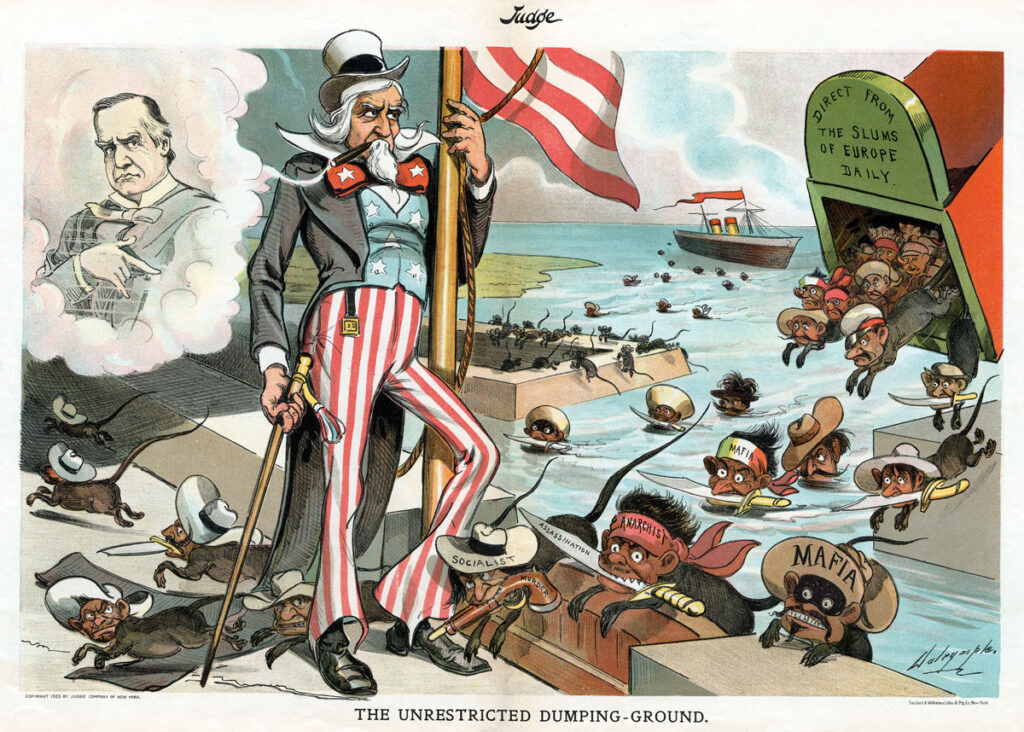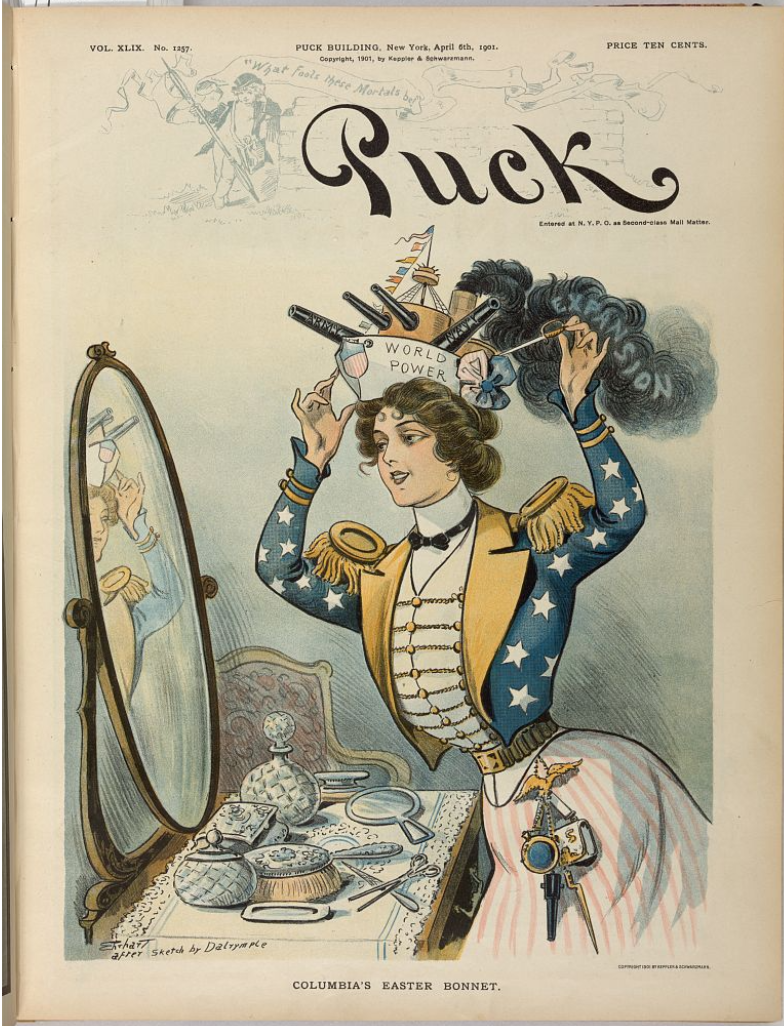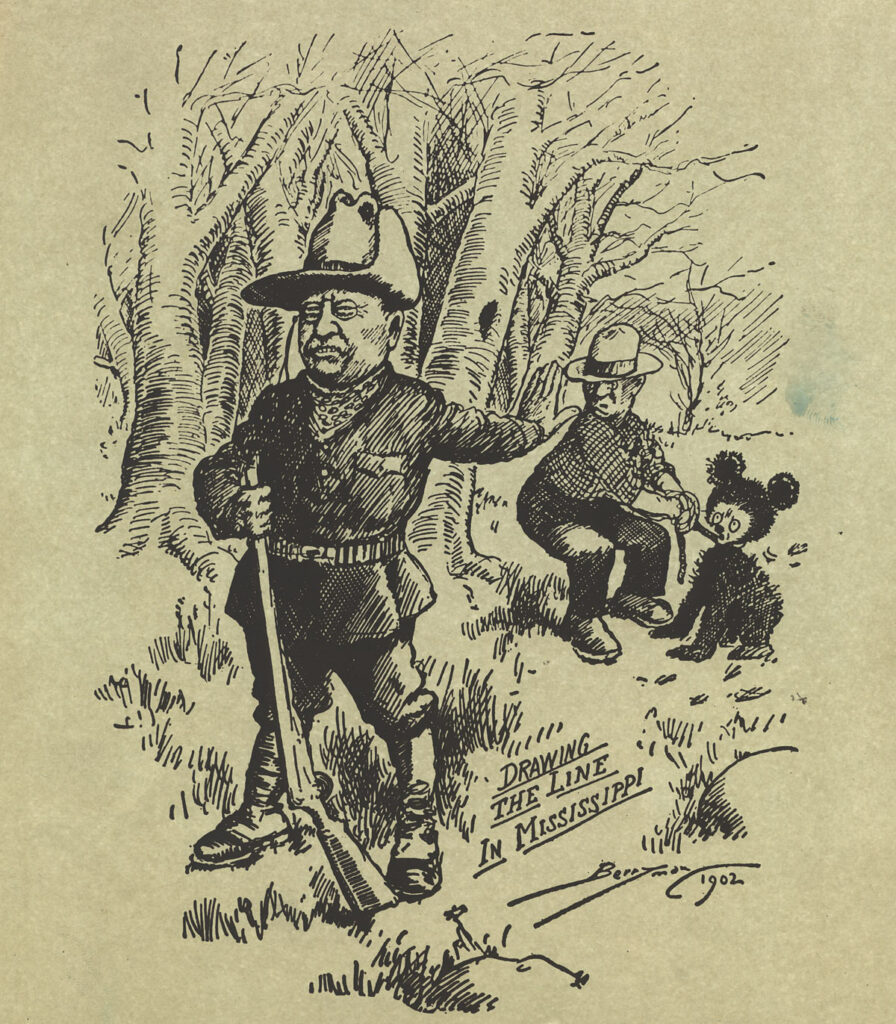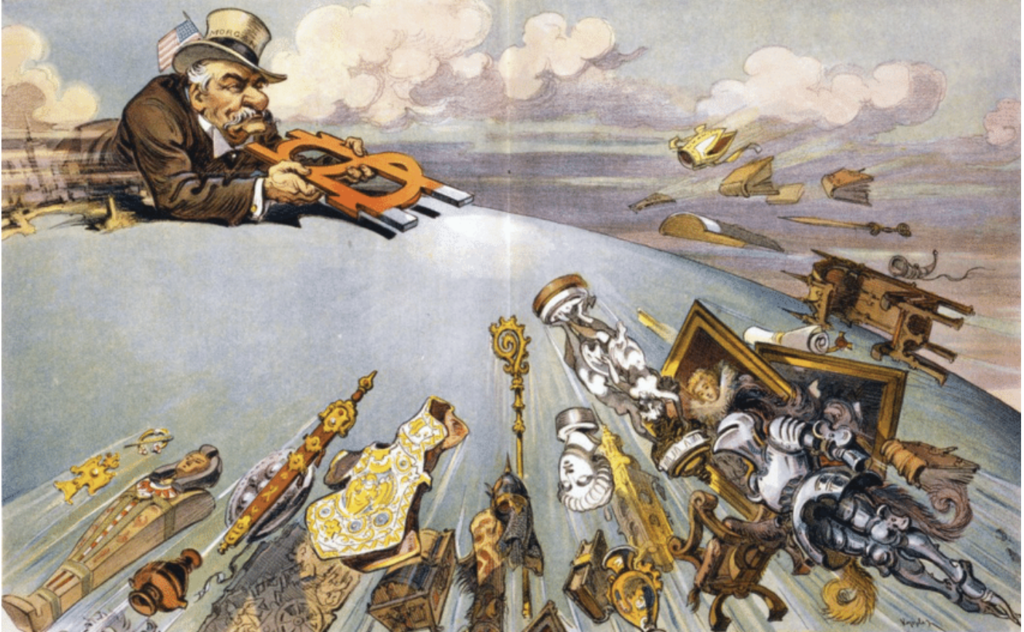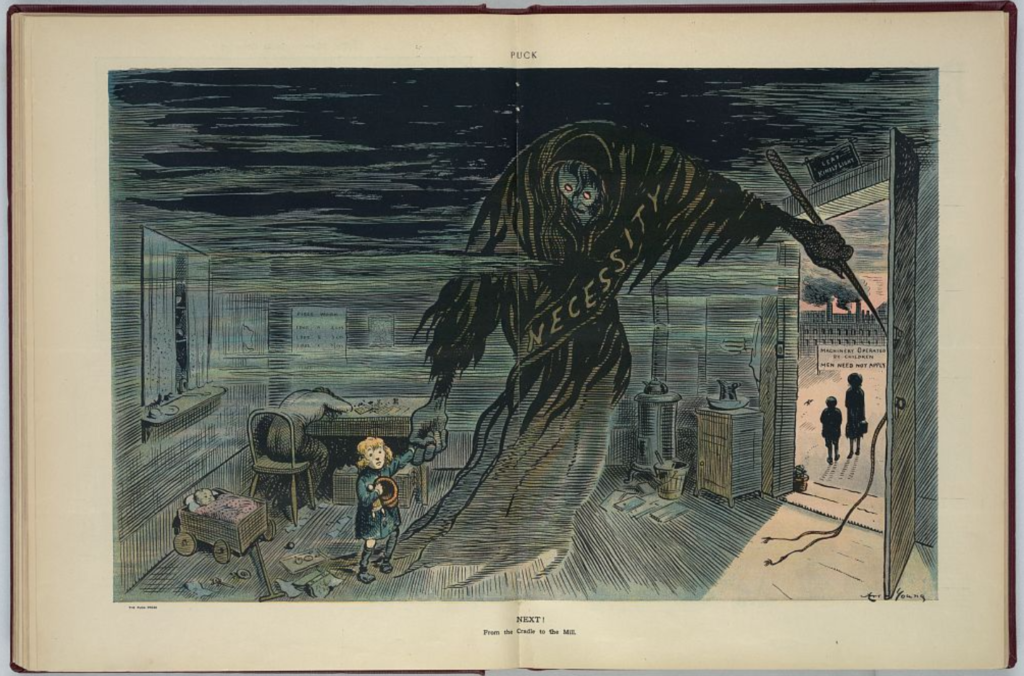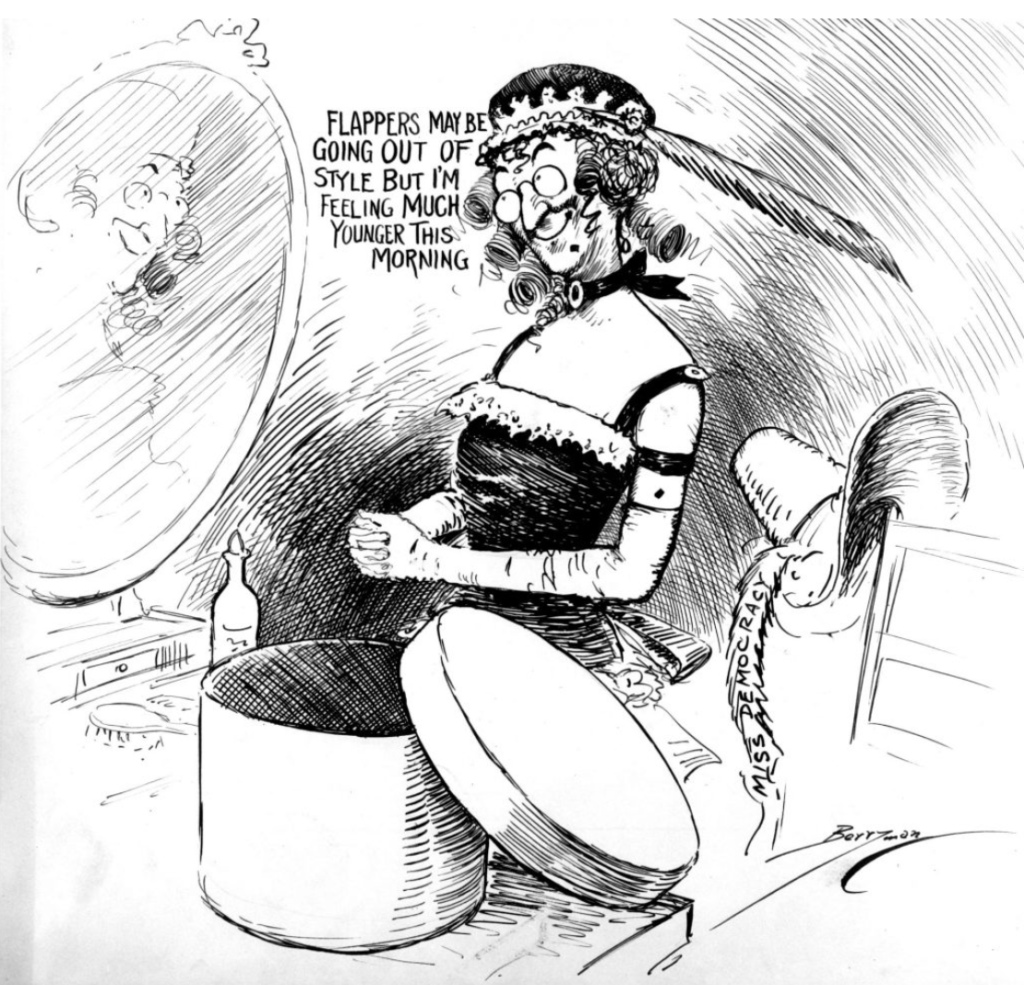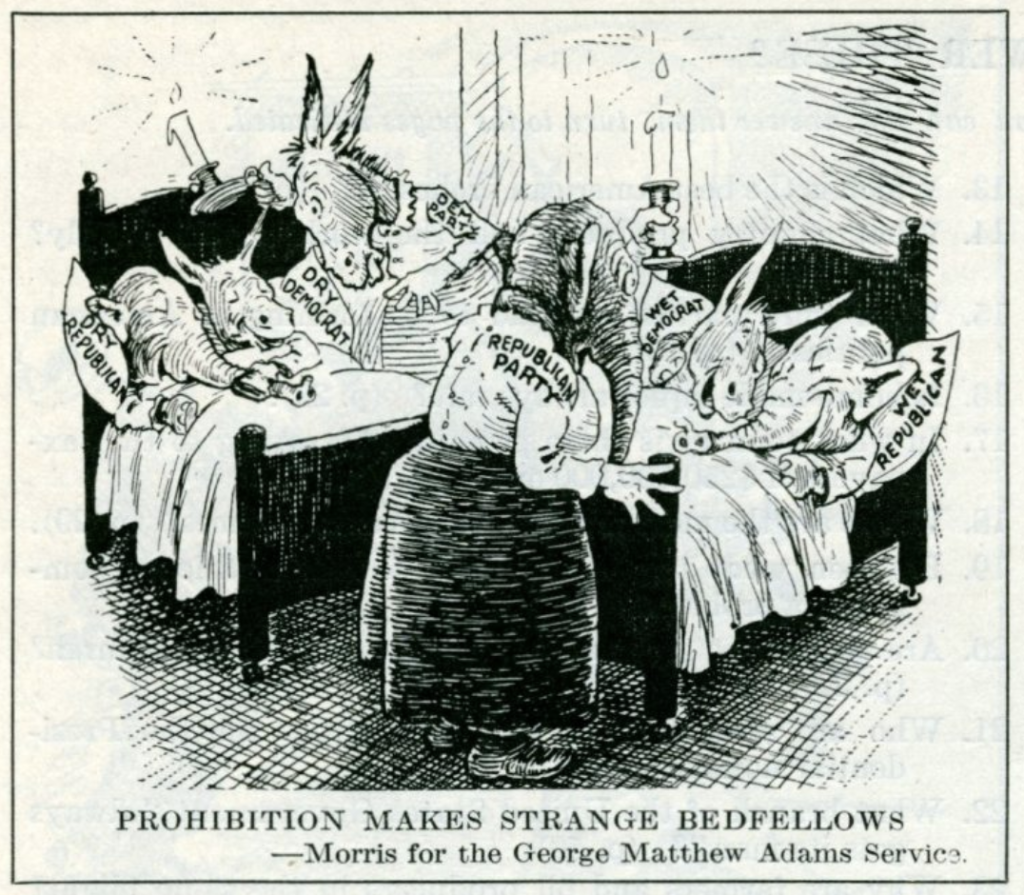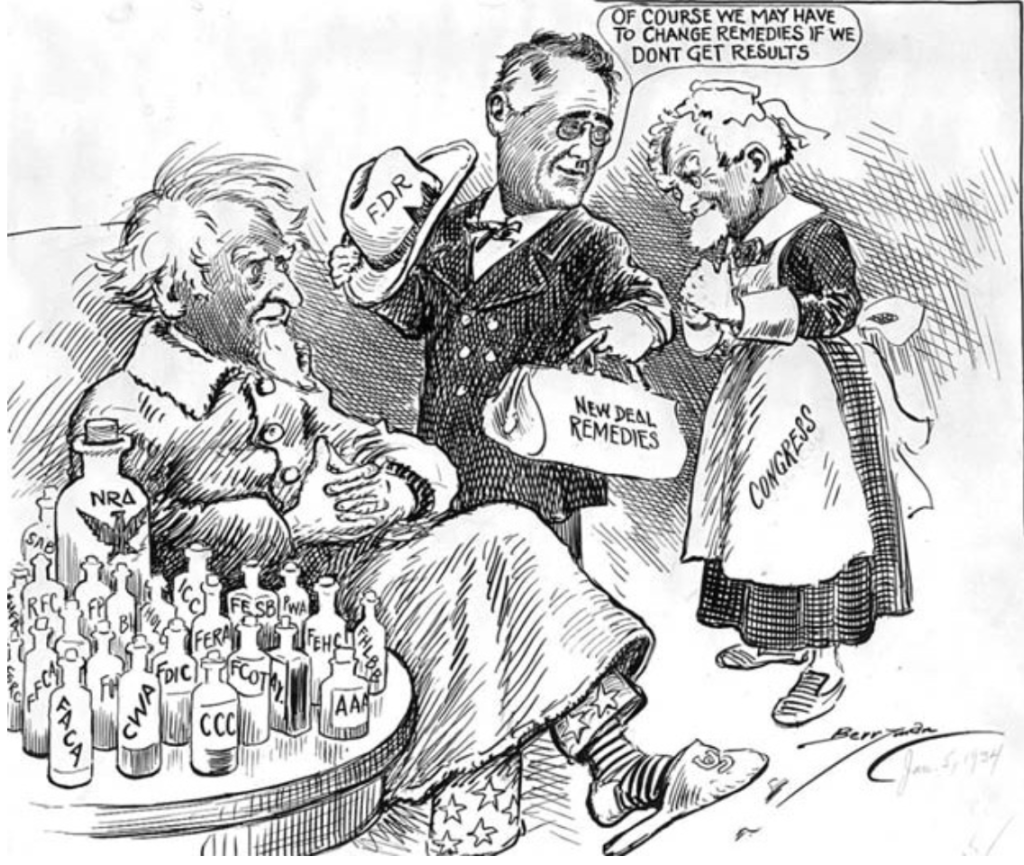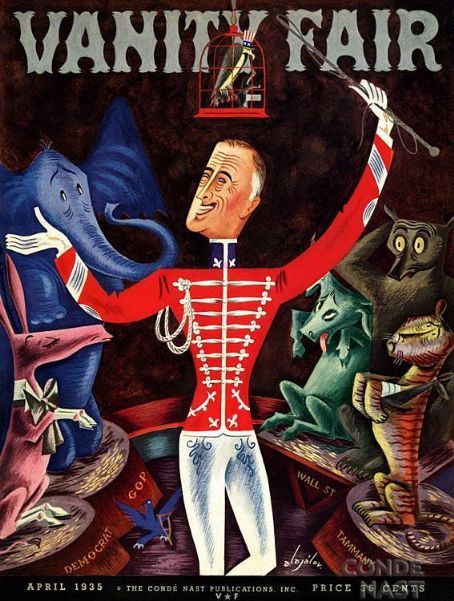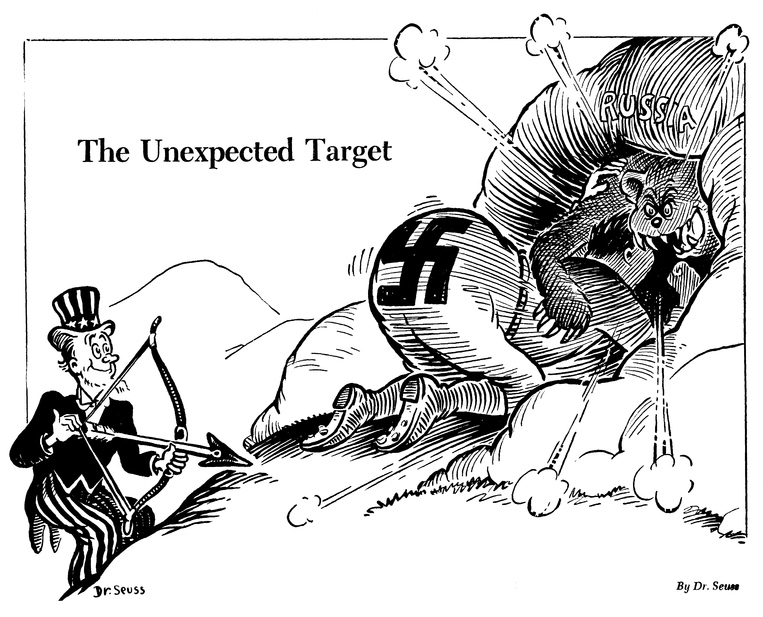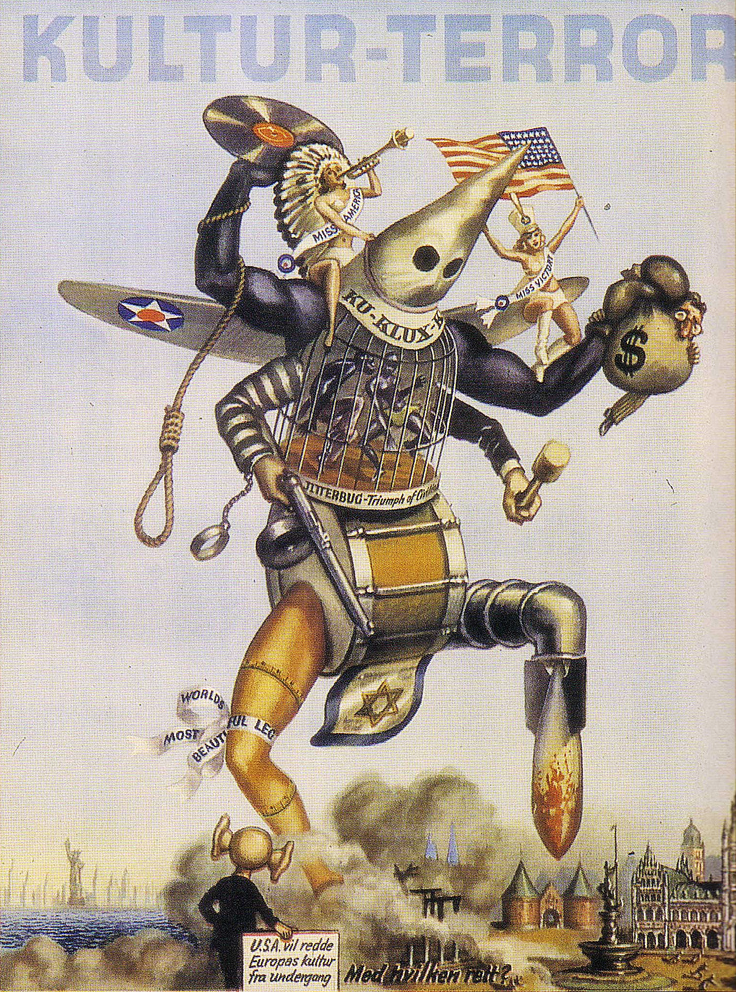The early 20th Century witnessed the demise of popular magazines such as Judge, Puck, Harper’s Weekly, and more (although Punch continued until the 1990s), and political cartoons were overwhelmingly found in newspapers. Film, radio, and television, which were all developed during this era, provided new mediums to lampoon and mock political events or figures.
Although the form of the political cartoon changed little since the days of Thomas Nast, the art styles and subject matter evolved considerably during this period, and produced some of the most famous American political cartoonists of all time, such as Clifford Berryman and Dr. Seuss.
Click on each image to enlarge.
The Unrestricted Dumping-Ground
Louis Dalrymple, 1903, for Judge Magazine, New York, New York
Uncle Sam stands beside an American Flag while the specter of recently assassinated president William McKinley appears in the smoke of his cigar. A ship “Direct From the Slums of Europe Daily” releases rats representing “undesirable” immigrants into America.
Columbia’s Easter Bonnet
S.D. Ehrhart, 1901, for Puck Magazine, New York, New York
Columbia, a female personification of the United States, tries on a new “Easter bonnet” in the shape of a warship which represents the United States becoming more involved in overseas imperialism.
Drawing the Line in Mississippi
Clifford Berryman, 1902, for the Washington Post, Washington, D.C.
This cartoon portrays president Theodore Roosevelt’s purported refusal to shoot a bear chained to a tree while on a hunting trip in Mississippi. The little bear, Bruin, became so popular that the cartoonist Clifford Berryman used him frequently as a character in later cartoons. These cartoons helped popularize the association of Teddy Roosevelt with teddy bears.
The Magnet
Joseph Keppler Jr., 1911, for Puck Magazine, New York, New York
The “magnet” depicted in this political cartoon is money, and the wielder of the “magnet” is American financier J. P. Morgan. This cartoon satirizes Morgan’s acquisition of priceless cultural artifacts from around the world. Cartoonist Joseph Keppler Jr.’s father was also a cartoonist and a contemporary of Thomas Nast. Both father and son influenced the growth of political cartoons in the United States. Keppler Jr., being an advocate of Native American rights, was adopted by the Seneca Nation, where he became an honorary chief and was given the name “Gyantwaka.”
From Cradle to the Mill
Art Young, 1912, for Puck Magazine, New York, New York
An indictment of child labor, a Grim Reaper-like figure with “Necessity” written on it takes a child by the hand guiding it from the home to the dangerous work of the industrial mill. Art Young was a socialist who eventually worked for the left-wing political magazine The Masses.
Poisoned at the Source
Art Young, 1912, for The Masses, New York, New York
This cartoon depicts the Associated Press’s president, Frank B. Noyes, poisoning a well labeled “The News” with lies, suppressed facts, slander, and prejudice. The artist was infuriated by the lack of news coverage concerning the Paint Creek-Cabin Creek strike of 1912, in which striking miners engaged in bloody violence against militia hired by coal companies.
Friends of Peace
W. A. Rogers, 1917, for America’s Black and White Book: 100 Pictured Reasons Why We are at War, New York, New York
Mocking a German communication from 1915 in which the Germans referred to themselves as “friends of peace,” this cartoon satirizes Germany’s peaceful claims upon the outbreak of US involvement in World War I. Artist W. A. Rogers created political cartoons for over 50 years for various publications.
Democracy At its Best
Clifford K. Berryman, 1922
Clifford Berryman made thousands of political cartoons throughout his lifetime. In this cartoon, he dresses one of his recurring cartoon characters, “Miss Democracy,”, in stereotypical flapper’s garb to reflect the shifting national mood of the time. President Harry S. Truman once told Berryman, “You are ageless and timeless. Presidents, senators and even Supreme Court justices come and go, but the (Washington) Monument and Berryman stand.”
Prohibition Makes Strange Bedfellows
“Morris,” 1927, for the George Matthew Adams Newspaper Service, New York, New York
Pro- and anti-prohibition forces often found allies and enemies along untraditional, and even surprising, party lines.
New Deal Remedies
Clifford Berryman, 1934, for the Washington Star, Washington, D.C.
President Franklin D. Roosevelt, portrayed here as a country doctor, administers “remedies” to a sick Uncle Sam in the form of Roosevelt’s New Deal programs which were meant to help combat the ravages wrought by the Great Depression. Congress is depicted as a worried old maid concerned over the sick Uncle Sam.
Ringmaster
Constantin Aladjálov, 1935, Vanity Fair, New York, New York
This cartoon depicts president Franklin Delano Roosevelt as a jolly ringmaster taming and cajoling animal representations of the political factions of the 1930s. Artist Constantin Alajalov was an Armenian-American painter and illustrator who left his native Russia during the Russian Civil War and eventually wound up in the United States.
The Unexpected Target
Theodore “Dr. Seuss” Giesel, 1941, for PM Magazine, New York, New York
Dr. Seuss, perhaps the most famous cartoonist and illustrator of all time, created a number of cartoons during WWII. In this cartoon, Hitler is preoccupied fighting a bear (the traditional animal representation of Russia) while Uncle Sam has the opportunity to strike his blind side. Seuss has recently come under criticism for the many racist caricatures he created throughout his career.
Kultur-Terror (or Liberators)
Harald Damsleth, 1944
One of the most famous political cartoons depicting the United States during WWII was created not by an American, but by a Norwegian Nazi named Harald Damsleth. The monster destroying a European city in this cartoon is made out of symbols of America as interpreted through the prism of Nazism. The word Seelenlosigkeit, or “soullessness,” was a German word that described an affliction that the Nazis attributed to America as a consequence of its “degeneration” and “cultural malaise.” This cartoon was made as a Nazi propaganda poster.
At the bottom, amid the ruins of European civilization, a man holds a sign that says, “The USA shall save European culture from destruction.” Next to it, the text reads: “With what right?”
The Blind Leading the Blind
Jan Jackson, 1945, for the Chicago Defender, Chicago, Illinois
Under the headline “Blind Leading The Blind,” a haggard Uncle Sam leads a disheveled, bloodstained Germany by the hand, out of the wartorn ruins of Europe. Both characters wear spectacles with blacked-out lenses displaying the words “race hate.”


